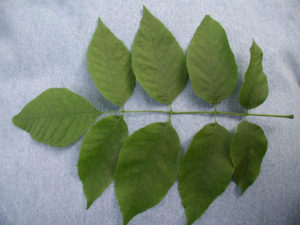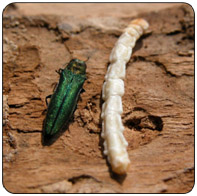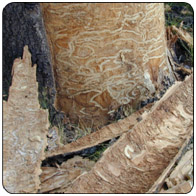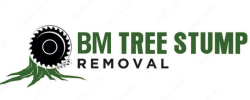Why remove a tree stump?
There could be a number of different reasons as to why remove a tree stump:
- Removing unsightly stumps and roots will improve the appearance of your property and increase its value.
- To re-claim a wasted area as usable land which could be utilized as an extension of your outdoor living space, give your children more room to run and play. You can also use it to garden, landscape, or build on.
- To prevent the roots, which stay alive long after the tree is cut down, may spread and crack any paved area in the vicinity of the stump.
- To eliminate any tripping hazards for you and your family and to make it easier to cut the grass without obstacle in your way.
- To prevent pests and insects from nesting in the decaying stump.
How a tree stump is removed:
The way we go about removing a tree stump is by a process called “stump grinding”. We use powerful, hydraulic compact stump grinders, which basically “chew up” the tree stump and transform it into a pile of wood chips. The wood chips are then used to fill in the empty hole where the stump used to be. Our equipment is compact and light-weight and will not damage your property in any way. Stump grinding is the fastest, safest and the most ecological way to remove a stump.
The majority of the stumps removed by B &M Stump Grinding/ Removal Services are left behind after Ash Trees are removed.
What does an Ash Tree Look Like?

An ash trees are easily identified by:
1. It has an opposite branching pattern (two branches come off the main stem, one on each side and
directly opposite each other)
2. It has compound leaves with 5-11 leaflets (depending on the species of ash). Leaflets are moderately
toothed and may be stalked or attached directly to the branch.
3. In winter: first look for the opposite branching pattern and stout twigs of ash. Small branches grow
off larger branches opposite one another. Likewise, buds and leaf scars are opposite one another
on twigs.
Next, Ash trees have many small dots (vascular bundles) on their leaf scars, forming a semi-circle or crescent pattern.
White and green ash tree spices have thick, diamond-patterned bark, while black ash bark is thin, ashy-gray, and scaly.
Emerald Ash Borer
Emerald Ash Borer is a forest pest native to Asia that has killed millions of Ash trees in southwestern Ontario, and the Great Lakes States. Due to its major economic and environmental threat, the Canadian Food Inspection Agency has prohibited the movement of firewood and any material made from Ash trees outside of designated areas under an Infested Places Order.
The Emerald Ash Borer attacks both healthy and stressed Ash trees when its larvae tunnel through the tree’s vascular system which delivers water, nutrients and sugars throughout the tree. Emerald Ash Borer will only travel a few kilometers per year on its own; however it can be easily dispersed long distances by people moving infested materials, such as firewood, logs, lumber, and woodchips.
Range
Emerald Ash Borer was first discovered in North America in 2002. It is thought to have been shipped to Canada in untreated wooden packaging materials. The range of Emerald Ash Borer in Ontario is rapidly expanding through the movement of infested materials. For an up to date range map, consult with the Canadian Food Inspection Agency at www.inspection.gc.ca.
Impacts of Emerald Ash Borer
- Attacking both stressed and healthy Ash trees.
- No known natural enemies to control the population or spread.
- Once infested, mortality of Ash trees is nearly 100%.
- Loss of habitat and food for other species.
- Extremely harmful to urban and rural biodiversity.
- Loss of valuable timber that is used for furniture, building and recreational products.
How to Identify Emerald Ash Borer
- Trees appear to be thinning at the crown, dead branches and yellowing of leaves.
- Adults emerge from a D-shaped exit hole between mid May and late June.
- Adults are metallic blue-green.
- Bodies are narrow and 8.5 to 14 mm long.
- Larvae are a creamy white colour with a light brown head.


What You Can Do
- Learn how to identify adult Emerald Ash Borer and what infested trees look like, as well as which host trees they target.
- Don’t move infested wood material from the regulated zone to new areas; this includes all firewood, trees, logs, lumber, wood or bark chips. Firewood should always be obtained locally and burned on site.
- If you see Emerald Ash Borer or signs of infestation, call the Ontario Ministry of Natural Resources at 1-800-667-1940 or the Canadian Food Inspection Agency at 1-800-442-2342.
- Report sightings to the toll-free Invading Species Hotline at 1-800-563-7711 or online at www.invadingspecies.com
For more information about the Emerald Ash Borer visit Wikipedia: https://en.wikipedia.org/wiki/Emerald_ash_borer
B & M STUMP GRINDING SERVICE
905-922-7664
Leaders in Quality, Price & Service!
